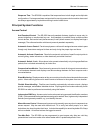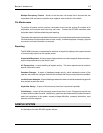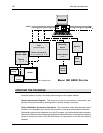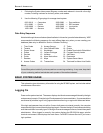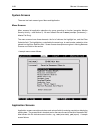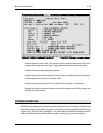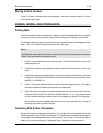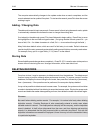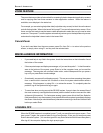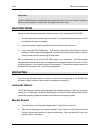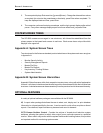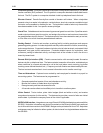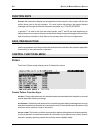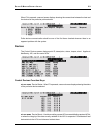
1-14 SECTION 1: INTRODUCTION
The computer automatically changes to the update mode when a search completes, and the
records selected can be updated if required. To start another search, press F4 to clear the screen
and begin again.
Adding / Changing Data
The add mode is used to input new records. Once a record is found using the search mode, update
is automatically selected which allows the user to change the existing data.
If not already in the add mode, press F5 to clear fields and to begin adding. Press Enter to move
the highlight bar to the next field and type the data. (If a typing mistake is made, press Ctrl + y to
clear a field, Ctrl + f to delete characters in a field, Ctrl + u to move back through the fields.)
Many fields have default values, which are used if a field entry is not made. Default values are
used to simplify the entry process by automatically setting certain fields to commonly used values.
For example, many yes or no type fields, (Y / N), have Y as the default.
Storing Data
Store all additions and changes when completed — Press F6. If F1 is used to return to the previous
screen without first storing the new / changed information, all the new data is lost.
DELETING RECORDS
From time to time, it may be necessary to delete records from the database. The delete record
function is easy to perform, although some cautions are involved. To remove a record from the
database, first display the record using the find mode, then press Esc, followed by d (lowercase),
then r (lowercase). If the operation can be performed, the computer displays deleted.
It may not be possible to delete records in some cases. For example, the system would not allow
a reader to be deleted without first deleting its associated access codes. Display the access code
records and delete the reader data appearing on them, then delete the reader record itself again.
CAUTION
Be careful when deleting certain records. For example, it is unwise to be hasty when deleting
keyholder records. Consider Employee A who occasionally entered a certain room where
valuable material is stored. The employee then abruptly left the company, and the keyholder
record is deleted. A theft is then discovered from the room, and from shipping and receiving
records it is determined that the theft occurred within a particular time frame. But with the
keyholder information now erased for Employee A, there is no way to link the transaction history
to a particular keyholder.



